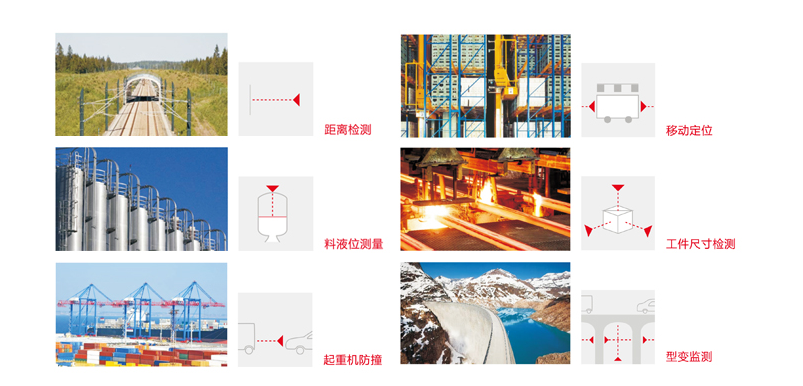As the main industrial transport equipment, whether the crane (also known as overhead crane and bridge crane) can run safely and smoothly not only affects the production efficiency of each process section, but also affects the personal safety of on-site workers.
In order to ensure the production rhythm of the entire enterprise and the safe operation of the overhead crane, it is particularly important to build a safe and effective overhead crane safety anti-collision system. Laser ranging sensors can provide reliable measurement and control data for the entire safety anti-collision system.
Port cranes play a very important role in the entire port material handling. Installing a crane anti-collision positioning system can ensure that the collision between cranes and the probability of collision with other objects in their path of action are greatly reduced, making the operation safer and more reliable, and playing a very important role in improving the production efficiency of cranes and reducing material handling costs. It can greatly reduce the probability of collision; it can accurately control the position of goods;

1. Measure the width of the box on the conveyor belt
Use two divergent transmission time laser sensors and install them face to face on both sides of the conveyor belt. Because the position of the box with changing size falling on the conveyor belt is not fixed, each sensor measures the distance between itself and the box, and sets one distance as L1 and the other as L2. This information is sent to the PLC, which subtracts L1 and L2 from the total distance between the two sensors to calculate the width W of the box.
2. Protecting the hydroforming die
The robot puts a preformed tube into the lower die of the hydroforming machine, and the operator must ensure that the position is accurate each time. Before the upper die falls, a divergent sensor measures the distance to the critical section of the tube, which ensures that the die is in the correct position before closing.
3. Two-axis crane positioning
Two reflective sensors are installed facing the reflector, which is installed on the two moving units of the bridge crane. One unit moves forward and backward, and the other moves left and right. When the crane drives the plate rack roller, the two sensors monitor the distance to the reflector, and the precise position of the crane can be continuously tracked through the PLC.

